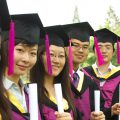The South Asian nation envisions itself as the Indian Subcontinent’s Singapore, but it has a lot of work to do before that happens
Despite boasting the highest per capita income in South Asia, Sri Lanka is still a developing country. The per capita GDP of the nation, with its 22 million inhabitants, was US$ 10,400 in 2014. The figure is higher than that for India, Pakistan and Bangladesh, but is certainly not high enough to defeat underdevelopment.
Sri Lanka does not carry the same weight with its neighbors as Singapore does with its. In any case, the latest elections could ensure stability, opening and the expectation of following in the city-state’s footsteps. The premier, Ranil Wickramasinghe, was confirmed the victor and will guide a coalition government. The debacle of Mahinda Rajapaksa – who had already been defeated in presidential elections in January – got even more attention from analysts. The two losses could be fatal for the former strongman. After the insurrection victory of the Tamils, the ethnic group that constitutes 15 percent of the island’s northwestern population, he seemed to exude an aura of invincibility. The rural, nationalistic Buddhist majority found in him an ambitious man, impervious to the human rights violations that international aid organizations and the United Nations were trying to nail him for. Entrepreneurs appreciated his mercilessness in conducting business. Even public opinion seemed to forgive the accusations of nepotism and corruption because people were happy about the strong economic growth.
And yet his popularity faded, hatching two main questions for Sri Lanka and its emergence: Does it know how to virtuously open up to international business? Will the strategic alliance with China continue?
The next move will be to open capital markets, reversing the “siege state” mentality, the central bank governor says. This will make it easier to receive and transfer money overseas. By 2016, the rupee should be fully convertible. A doubling of monetary reserves will ensure reforms. More efficient taxation will strengthen the budget. The intermediate objective is to attract international investors to form a productive base that can export, especially to India.
Sri Lanka has to date survived on its traditional products, such as textiles and clothing, rubber products and its legendary tea. Now, it can aim for more prosperous pastures, taking advantage of its assets: fertile land, widespread ability to speak English, an independent judicial system, and the balance between population and territory.
Relations with Beijing will be more tenuous, but no rupture will occur. Many infrastructural projects financed by China are under construction. For example, the Port City project suspended for inspections is poised to transform Colombo into a capital in the vein of Dubai. Hambantota’s port, built in deep water, will serve to host Beijing’s navy, a move that alters the equilibrium of the Indian Ocean and worries New Delhi. However, the new government will try to limit its dependence on Beijing without alienating it, all while strengthening relations with the international community.
This is the outline of the ambition to transform Sri Lanka into the “Indian Subcontinent’s Singapore.” Ironically, the city-state has a Tamil minority. There are other similar assets, especially those deriving from membership in the Commonwealth of Nations, the grouping of mostly former British colonies. But many others need to be built. This is necessary to imagine a vision for the future and choose leaders capable of making it reality. It’s the hardest challenge, but it is necessary to achieve the biggest ambitions. This is also what Singapore accomplished with Lee Kuan Yew after its independence.


















